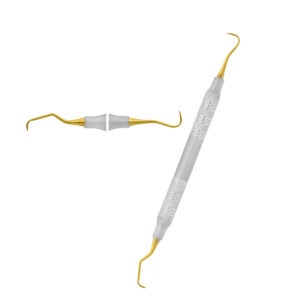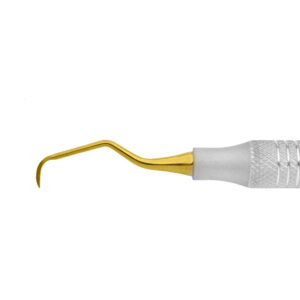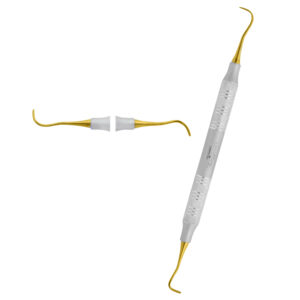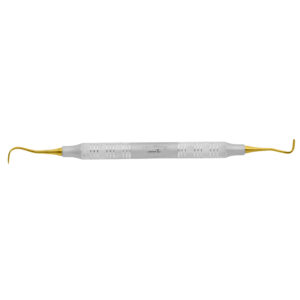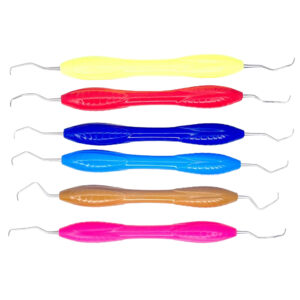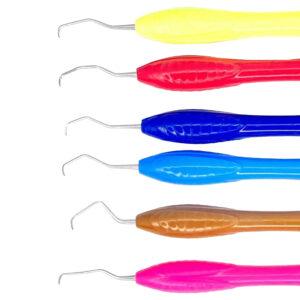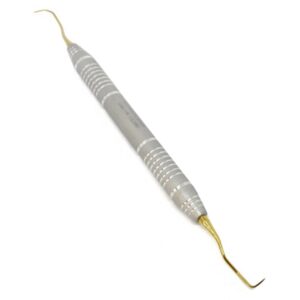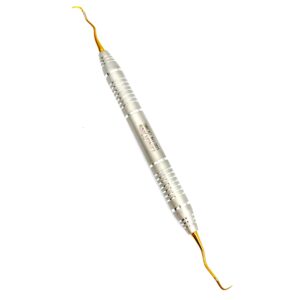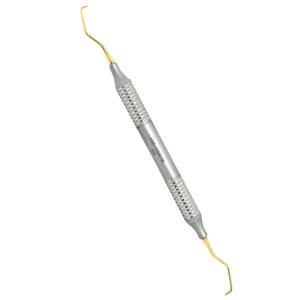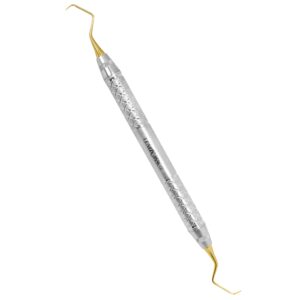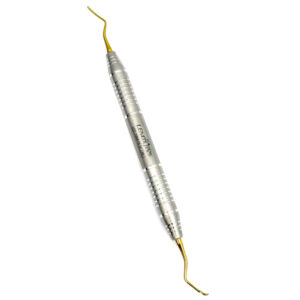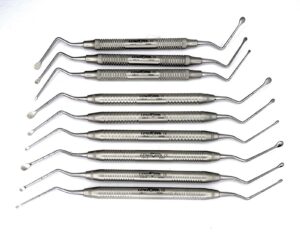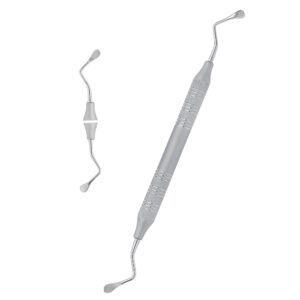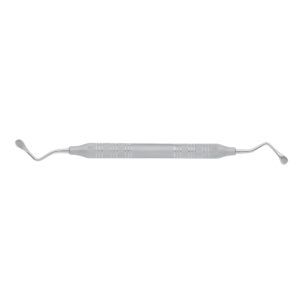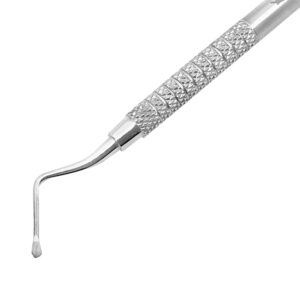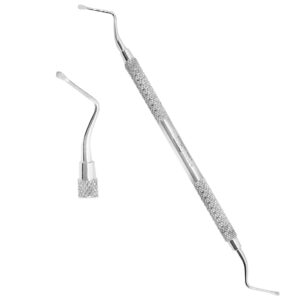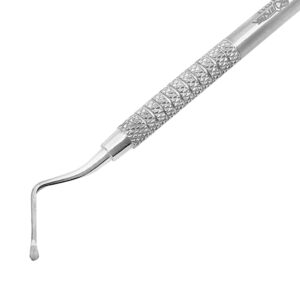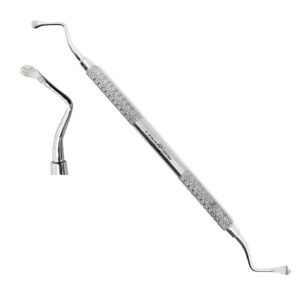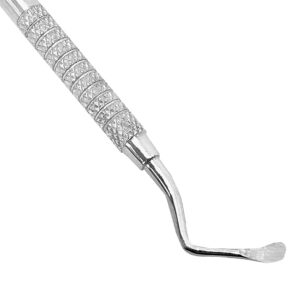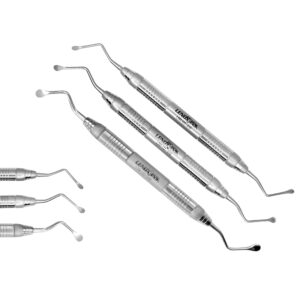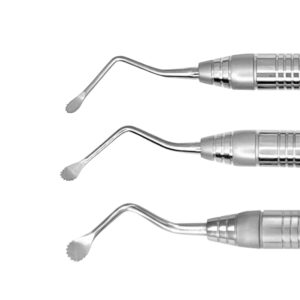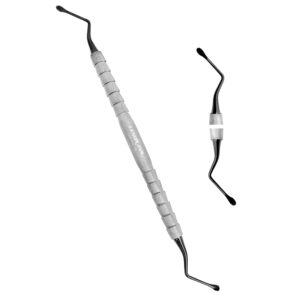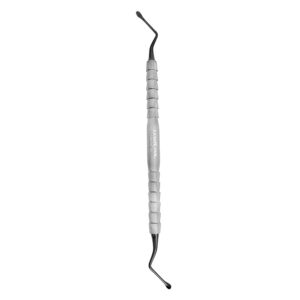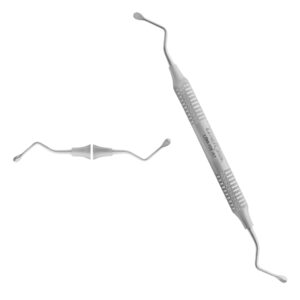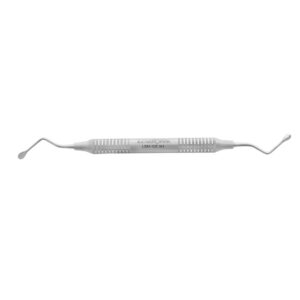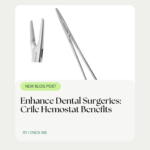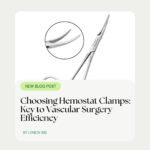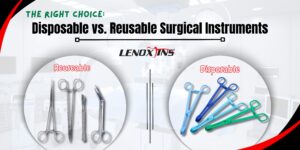Decoding Dental Curettes vs. Surgical Variants
- lenoxinstro
- December 2, 2024
- Dental Instruments, Dental Surgical
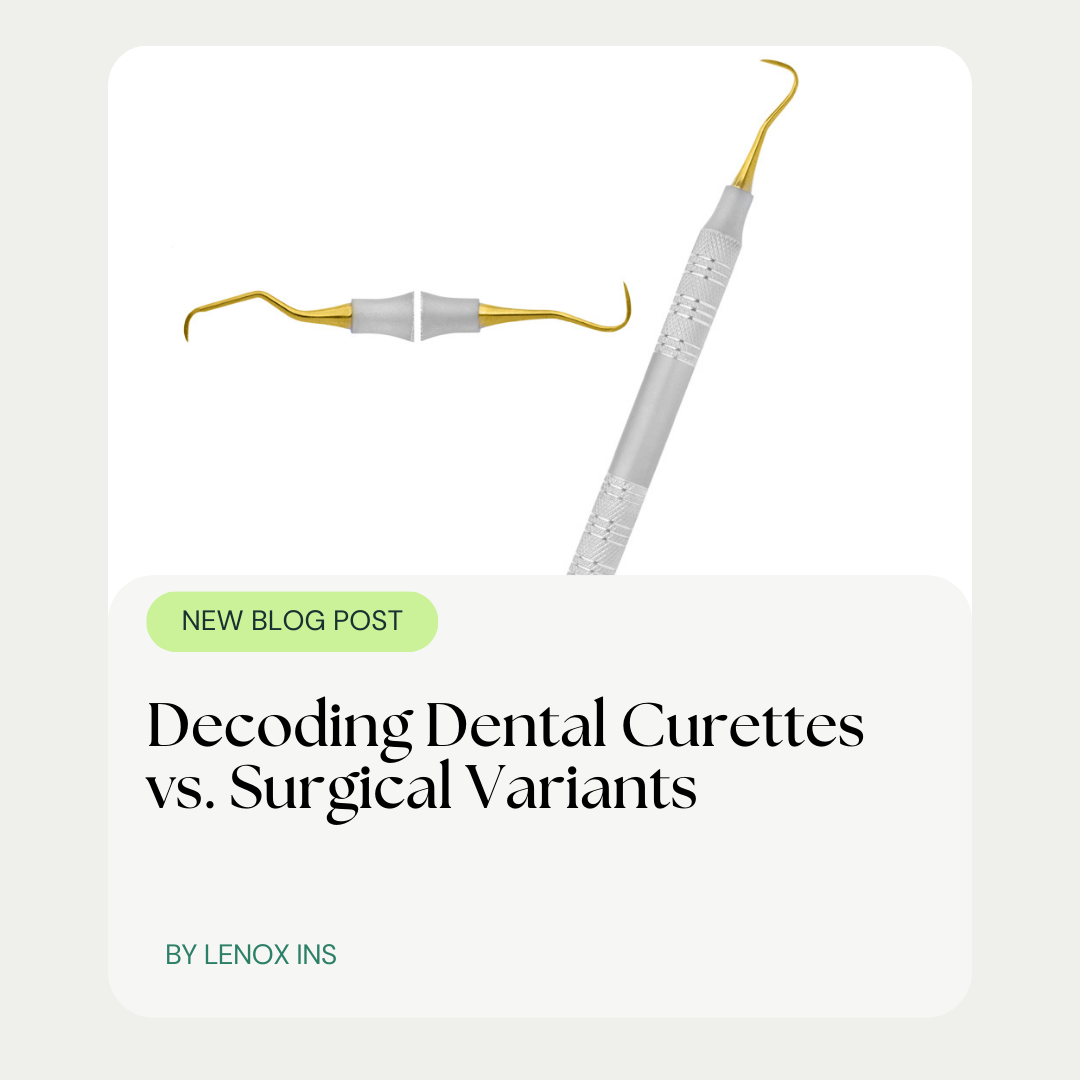
Are you unsure about the differences between dental and surgical curettes? Understanding these distinctions is crucial for effective patient care and accurate diagnosis. In this post, I will explain the roles of dental and surgical curettes, compare their features, and guide you in selecting the right instrument for your practice. By the end, you will have a clearer understanding of how to choose the appropriate curette, enhancing your surgical procedures, including sinus lifts, and improving overall patient outcomes.
The Role of Curettes in Healthcare
Curettes play a vital role in healthcare, particularly in the fields of dentistry and surgery. Understanding their uses, including the removal of granulation tissue and the application of pressure during procedures, is essential. I will also discuss the history of curettes in medicine, highlighting their evolution and significance in techniques like cauterization and radiography. This foundation sets the stage for exploring the distinctions between dental and surgical curettes.
Understanding Curettes and Their Uses
Curettes are essential tools in both dental and surgical practices, designed for specific tasks that enhance patient care. In endodontics, for instance, I often use metal curettes to remove debris from the root canal system, ensuring a clean environment for effective treatment. Understanding the various applications of curettes, including their role in nursing and the importance of proper technique, is crucial for achieving optimal outcomes in procedures involving abutments and other dental structures: Curettes Periodontal
- Definition and purpose of curettes in healthcare.
- Applications in dental and surgical settings.
- Importance of material choice, such as metal, for durability.
- Specific uses in endodontics and other specialties.
- Role in nursing and patient care during procedures.
The History of Curettes in Medicine
The history of curettes in medicine reveals their evolution from simple tools to essential instruments in both dental and surgical practices. Initially crafted from steel, these instruments were designed to effectively remove connective tissue and debris, facilitating procedures that involve delicate areas, such as around arteries. Over time, advancements in design, including ergonomic handles, have improved their usability, making them indispensable for healthcare professionals aiming for precision and efficiency in patient care. Lucas bone curettes are an example of such innovation.
Dental Curettes Explained
Product Collection
Dental curettes come in various types, each tailored for specific procedures, such as scaling and root planing, particularly in the treatment of periodontal disease. I will discuss the unique design features of dental curettes, including their compatibility with handpieces and sensors, which enhance their effectiveness in health care settings. Understanding these distinctions is crucial for selecting the right instrument for optimal patient outcomes. Dental curettes
Different Types of Dental Curettes
In my experience, dental curettes are categorized into several types, each designed for specific functions in restorative dentistry. For instance, I often use Gracey curettes for scaling and root planing, particularly around the cementoenamel junction, where precision is crucial. Additionally, there are curettes specifically designed for accessing the maxillary sinus during procedures, which can be vital in cases involving calcium deposits or other complications.
| Type of Dental Curette | Primary Use |
|---|---|
| Gracey Curettes | Scaling and root planing, especially around the cementoenamel junction |
| Universal Curettes | Versatile use for various scaling tasks |
| Micro Curettes | Accessing delicate areas, such as the maxillary sinus |
| Electrosurgery Curettes | Used in electrosurgery for precise tissue removal |
Procedures That Use Dental Curettes
In my practice, dental curettes are integral to various procedures aimed at improving oral health. For instance, during scaling and root planing, I focus on the motion of the curette to effectively remove plaque and calculus while minimizing bleeding on probing. The objective is to create a clean surface that reduces the risk of infection and promotes healing, especially in the presence of saliva, which can complicate the procedure. Understanding these applications helps ensure compliance with Food and Drug Administration standards, ultimately enhancing patient outcomes.
| Procedure | Use of Dental Curettes |
|---|---|
| Scaling and Root Planing | Removes plaque and calculus from tooth surfaces |
| Accessing Periodontal Pockets | Facilitates cleaning in areas with bleeding on probing |
| Maxillary Sinus Procedures | Allows for precise removal of tissue and debris |
| Electrosurgery | Enables targeted tissue removal with minimal bleeding |
Design Features Specific to Dental Curettes
The design features of dental curettes are specifically tailored to address the unique challenges of working with tooth and dentin structures. I find that the morphology of these instruments allows for precise access to periodontal pockets and the removal of tissue without damaging surrounding muscle or healthy structures. The angled blades and ergonomic handles enhance maneuverability, enabling me to perform delicate procedures with greater control and efficiency, ultimately improving patient outcomes.
Surgical Curettes Overview
Surgical curettes are specialized instruments designed for various applications in surgery, including microsurgery and procedures involving the alveolar process. I will discuss the different types of surgical curettes, their specific applications, and the design characteristics that enhance their effectiveness. Understanding these elements is crucial for minimizing bleeding and ensuring precision during surgical interventions. Surgical curettes
Various Types of Surgical Curettes
In my experience, surgical curettes come in various types, each designed for specific surgical applications. For instance, I often use wire curettes for precise tissue removal during delicate procedures, where careful evaluation of the surrounding structures is crucial. These instruments help minimize the risk of damage to adjacent tissues while allowing for accurate measurement of the area being treated, ensuring optimal outcomes in surgery. Understanding the differences between dental and surgical curette types
| Type of Surgical Curette | Primary Use |
|---|---|
| Wire Curettes | Precise tissue removal in delicate surgeries |
| Bone Curettes | Scraping and shaping bone surfaces |
| Endoscopic Curettes | Accessing and removing tissue in minimally invasive procedures |
| Microsurgical Curettes | Used in microsurgery for fine tissue manipulation |
Applications of Curettes in Surgery
In my surgical practice, I frequently utilize curettes to address various conditions, particularly when managing inflammation and facilitating tissue removal. For instance, during procedures involving the extracellular matrix, I often rely on titanium curettes for their durability and precision. These instruments allow me to effectively scrape and shape tissue while minimizing trauma, ensuring that I can maintain control, often using my thumb to guide the curette, and achieve optimal outcomes in delicate surgeries.
Design Characteristics of Surgical Curettes
The design characteristics of surgical curettes are tailored to enhance their functionality in various surgical applications. I often choose stainless steel curettes for their durability and resistance to corrosion, which is essential when working in environments that may involve anesthesia or the manipulation of membranes. The precision of these instruments is crucial, especially during procedures that require careful scraping and shaping of tissue, such as in ossification or when preparing for imaging techniques like tomography. This attention to design ensures that I can perform delicate tasks with confidence, ultimately improving patient outcomes.
Comparing Dental and Surgical Curettes
In comparing dental and surgical curettes, I focus on their design and structural differences, which directly impact their distinct uses and applications in oral hygiene and surgical procedures. Additionally, I will address the sterilization and maintenance processes essential for ensuring the effectiveness of these instruments. Understanding these aspects is crucial for optimizing outcomes in both clinical trials and everyday practice.
Design and Structural Differences
The design and structural differences between dental and surgical curettes are significant and tailored to their specific applications. Dental curettes often feature a curved blade that resembles a chisel, allowing for precise scaling and root planing in the arch of the mouth, while surgical curettes are typically more robust, designed for scraping and shaping tissue in various surgical contexts. For instance, when addressing lesions related to cardiovascular disease, I rely on the durability and precision of surgical curettes, which can withstand the demands of procedures that may involve ultrasound guidance or delicate tissue manipulation.
Distinct Uses and Applications
In my practice, the distinct uses and applications of dental and surgical curettes are evident in their design and purpose. For dental procedures, I often rely on curettes to effectively clean tooth enamel and remove plaque, ensuring optimal oral health. In contrast, surgical curettes are essential for tasks such as performing a biopsy or scraping tissue from the jaw, where precision and durability are critical. The choice of materials, such as tungsten for surgical curettes, enhances their effectiveness, particularly when considering the length and robustness needed for various surgical interventions.
Sterilization and Maintenance Processes
Maintaining the effectiveness of dental and surgical curettes requires diligent sterilization and maintenance processes. As a clinician, I prioritize the proper cleaning and sterilization of these instruments to prevent cross-contamination, especially when working in sensitive areas like the mandible or during procedures such as bone grafting. Regular sharpening of the tips is essential to ensure precision and efficiency, allowing me to perform delicate tasks with confidence and accuracy. dental surgical curettes
- Importance of sterilization to prevent cross-contamination.
- Regular maintenance and sharpening of tips for optimal performance.
- Specific considerations for instruments used in the mandible and bone grafting procedures.
Selecting the Right Curette for Your Practice
Selecting the right curette for your practice involves several critical factors, including curvature, material, and intended use. I have found that proper tool selection significantly impacts patient outcomes, especially when addressing debris removal and promoting growth factors during procedures. In the following sections, I will discuss the specific considerations for instrument selection and how these choices can enhance the effectiveness of both dental and surgical practices.
Product Collection
Factors to Consider in Instrument Selection
When selecting the right curette for your practice, several factors come into play, particularly in the fields of periodontology and general surgery. I consider the specific application of the curette, whether it’s for scaling in dental procedures or tissue removal in surgical settings. The choice of material is also crucial; for instance, stainless steel offers durability, while the design must accommodate the use of a speculum or allow for fluid management during procedures, ensuring optimal performance and patient safety. Periodontology
| Factor | Consideration |
|---|---|
| Application | Determine if the curette is for dental or surgical use. |
| Material | Choose between stainless steel or other durable options. |
| Design | Ensure compatibility with tools like speculums and fluid management. |
| Functionality | Assess the specific tasks, such as scaling or tissue removal. |
The Effect of Proper Tool Selection on Patient Outcomes
In my experience, the effect of proper tool selection on patient outcomes cannot be overstated. Choosing the right curette, whether for dental implants or calculus removal, directly influences the effectiveness of the procedure and the overall patient experience. For instance, using a well-designed curette allows me to maneuver with precision, ensuring that I can effectively clean around dental implants while minimizing trauma to surrounding tissues, which is crucial for successful healing.
| Factor | Consideration |
|---|---|
| Application | Determine if the curette is for dental or surgical use. |
| Material | Choose between stainless steel or other durable options. |
| Design | Ensure compatibility with tools like speculums and fluid management. |
| Functionality | Assess the specific tasks, such as scaling or tissue removal. |
Future Developments in Curette Technology
Emerging trends in dental curettes are focusing on enhanced precision and efficiency, particularly with the integration of optical fiber technology for improved visibility during procedures. In surgical settings, new technologies are advancing the design of curettes, including the use of scalpel-like edges for better tissue management and the application of endoscopy techniques to facilitate flap procedures. These developments are crucial for optimizing patient outcomes and ensuring effective treatment. Understanding the differences between dental and surgical curette types.
Emerging Trends in Dental Curettes
Emerging trends in dental curettes are increasingly focusing on enhancing precision and efficiency through innovative technologies. For instance, the integration of vibration technology allows for more effective plaque removal around anterior teeth, minimizing discomfort for patients. Additionally, advancements in design, such as incorporating features that work seamlessly with drills and hemostats, enable me to perform procedures with greater control and accuracy, ultimately improving patient outcomes.
- Integration of vibration technology for effective plaque removal.
- Design advancements that enhance compatibility with drills and hemostats.
- Focus on improving precision and control during procedures.
- Enhanced functionality for working around anterior teeth.
- Innovative features that support better patient comfort.
New Technologies in Surgical Curettes
Recent advancements in surgical curettes have significantly improved their functionality, particularly in the management of soft tissue. I have observed the integration of calipers and forceps into surgical trays, enhancing the precision of tissue manipulation and removal. These innovations not only increase sensitivity and specificity during procedures but also allow for more controlled interactions with delicate structures, ultimately leading to better patient outcomes.
Conclusion
Exploring the distinctions between dental and surgical curettes is essential for optimizing patient care in both fields. Understanding their specific designs, applications, and materials directly impacts the effectiveness of procedures, whether in dentistry or surgery. By selecting the appropriate curette, healthcare professionals can enhance precision, minimize trauma, and improve overall patient outcomes. This knowledge empowers practitioners to make informed decisions that ultimately lead to better healthcare experiences for their patients.

